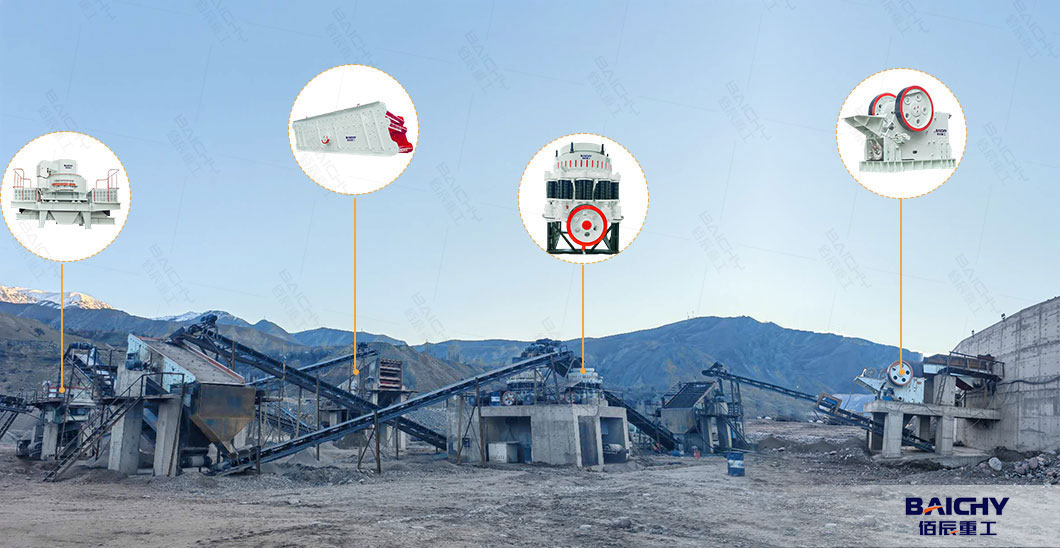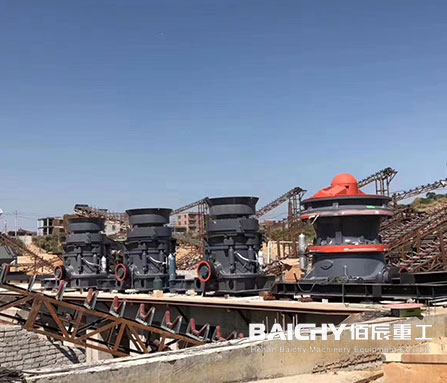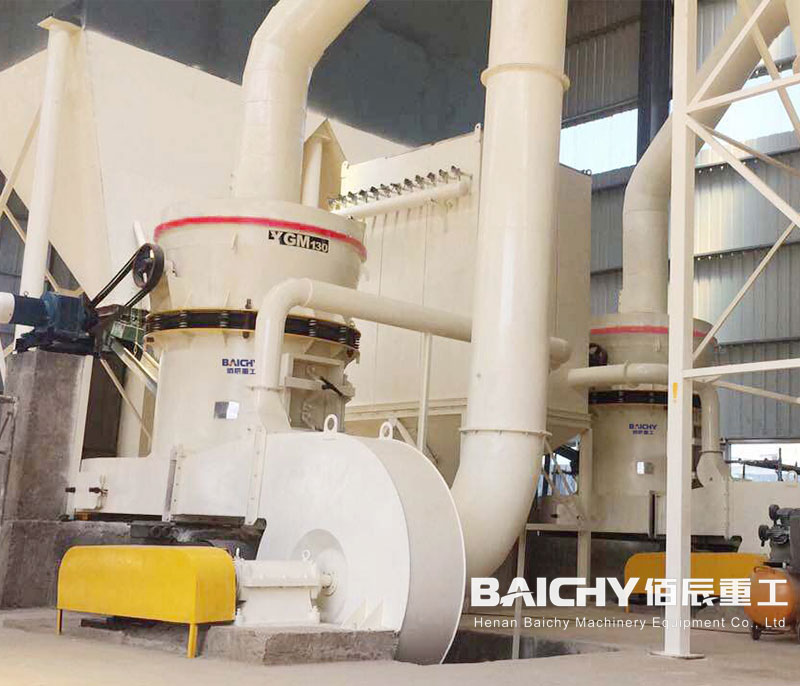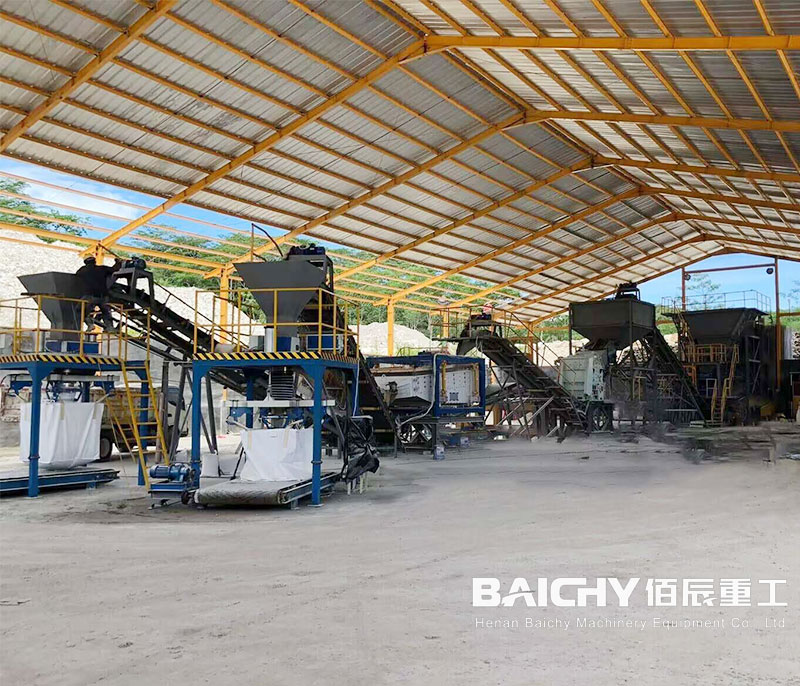A stone crusher plant consists of various components that work together to process raw materials into finished products for construction and other applications. Here are the key components typically found in a stone crusher plant:

Primary Components:
1. Feeder:
The vibrating feeder is responsible for feeding the raw material into the crusher. It ensures a continuous and regulated flow of material to the crusher.
2. Crusher:
The crusher is the primary machine that reduces the size of the raw material. It can be a jaw crusher, impact crusher, cone crusher, or gyratory crusher depending on the type of stone and the desired end product.
- Primary Crusher
Jaw crusher is often used as a primary crusher. It has a simple structure with two jaws, one fixed and one movable. The stones are crushed between these jaws by compressive force. It can handle large - sized stones and reduce their size to a more manageable level for further crushing.
Another option for the primary crusher can be a gyratory crusher, which is suitable for high - capacity applications and can handle very hard and abrasive stones.
- Secondary Crusher
Cone crusher is a popular choice for secondary crushing. It uses a rotating mantle and a concave surface to crush the stones further. It can produce more uniform - sized products compared to the primary crusher.
Impact crusher is also used in some cases. It works by using impact force to break the stones. It is effective for crushing materials with a relatively lower hardness.
- Tertiary Crusher (Optional)
For applications that require very fine - sized products, a tertiary crusher such as a vertical shaft impact crusher (VSI) may be used. It can further refine the crushed stones to the desired particle size distribution.
3. Vibrating Screen:
The vibrating screen separates the crushed materials into different sizes. It ensures that the final product meets the required specifications by separating out oversize and undersize materials. This is used to separate the crushed stones into different sizes. It has a vibrating motion that allows the smaller particles to pass through the screen apertures while retaining the larger ones. Multiple - deck vibrating screens can be used to separate the stones into more than two size fractions.
Secondary Components:
4. Conveyor Belts:
Conveyor belts transport the crushed material from one part of the plant to another. They play a crucial role in the continuous operation of the plant by moving materials efficiently. They are used to transport the stones between different components of the crusher plant. For example, from the hopper to the crusher, from the crusher to the screen, and for transporting the final products to the storage area. Belt conveyors are reliable and can handle a large amount of material over long distances.
5. Control Panel:
The control panel houses the electrical control components of the plant. It allows operators to monitor and control the operation of various equipment within the plant. It is used to monitor and control the operation of the entire stone crusher plant. Operators can adjust the settings of the feeder, crushers, and conveyors through the control panel. It also has safety features to protect the equipment and workers, such as emergency stop buttons and overload protection.
6. Dust Suppression System:
To control dust emissions during the crushing process, a dust suppression system is often installed. This system helps to create a safer and cleaner working environment.
- Dust Collector
Cyclone dust collectors or bag - house dust collectors are often used. They capture the dust generated during the crushing process to reduce environmental pollution and improve the working environment.
- Dust Suppression Sprinklers
Sprinklers can be installed at key points in the plant, such as at the crusher discharge and on the conveyor belts, to suppress the dust by wetting the stones and reducing the amount of airborne dust particles.
Additional Components:
7. Storage Hopper or Bin:
A storage hopper or bin is used to store the raw material before it is fed into the crusher. It ensures a steady supply of material to the crusher.
8. Generator Set:
In areas where access to electricity is limited, a generator set is used to provide power to the crusher plant and its components.
9. Control Room:
The control room is where operators monitor and control the entire crushing process. It provides a centralized location for overseeing the plant's operation.
Optional Components:
10. Screening Equipment:
Additional screening equipment such as a scalper or a deck screen can be included to further refine the size and quality of the final product.
11. Washing Equipment:
For certain types of stone materials, washing equipment like a sand washer may be installed to clean and remove impurities from the final product.
Benefits of a Well-Equipped Stone Crusher Plant:
- Efficient Crushing Process: The components work together to efficiently crush and process raw materials into the desired end products.
- Versatility: Different types of crushers and screens can be used to produce various sizes and shapes of crushed stone.
- Reliable Operation: Proper maintenance and monitoring of components ensure smooth and reliable plant operation.
- Environmentally Friendly: Dust suppression systems and other measures help reduce environmental impact.
A well-designed stone crusher plant with the right components can enhance productivity, quality, and efficiency in the crushing process, leading to high-quality final products for construction and other applications.






 2025-06-28
2025-06-28





















 86-15093113821
86-15093113821
 86-15093113821
86-15093113821

